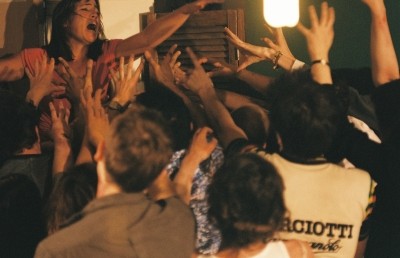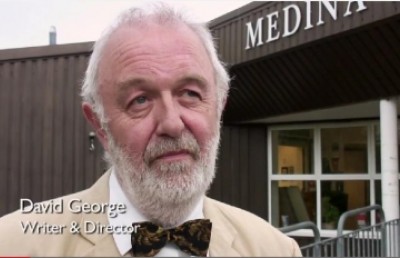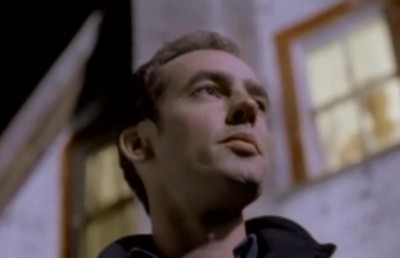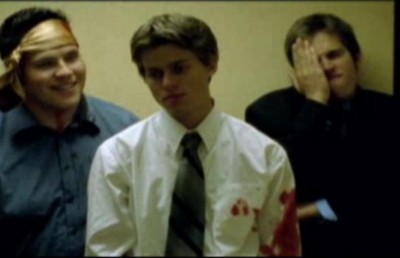The British New Wave and Its Sources
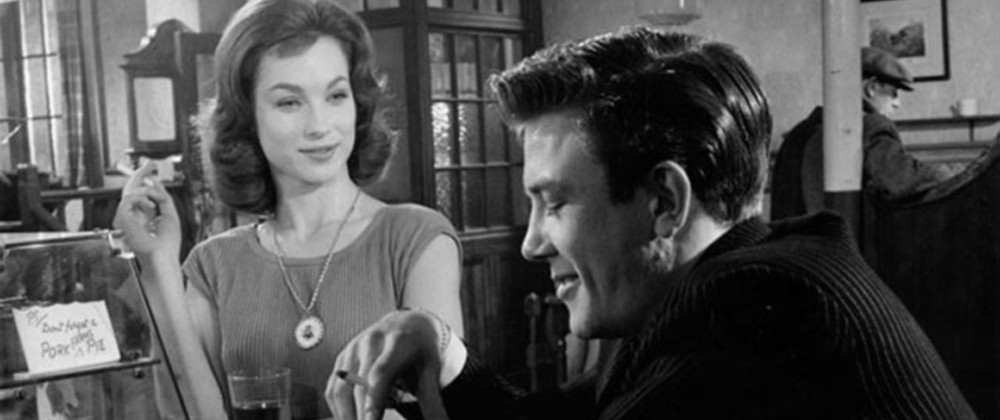
The films associated with the British “New Wave” period that ran roughly between 1959 and 1963 were in some ways a break from what came before it. However, many of the characteristics this cycle of films was noted for were already present in British cinema. Attempts at realistic documentation of the working class can be traced at least as far back as 1930s documentaries by filmmakers such as John Grierson, Paul Rotha, Harry Watt and Basil Wright. In a series of wartime documentaries that included dramatized material, Humphrey Jennings incorporated a poetic treatment of the landscape and people that included the regions outside of London. Comedies produced by Ealing Studios following World War II extended this technique to entirely fictional films, featuring location shooting and the use of regional and working class accents. The Free Cinema documentaries of the 1950s had some formal experimentation and a critical attitude toward working class culture and the class society. What was new about the New Wave is that it added a greater emphasis on the social environment, a franker treatment of sex, a focus on working class youth and their frustrations, and political attitudes that reflected the context in which they were made.
In documentaries such as Industrial Britain (1933, Robert Flaherty and John Grierson), Shipyard (1935, Paul Rotha) and Night Mail (1936, Harry Watt and Basil Wright), British filmmakers had attempted to portray the details of working class life. These films can be faulted for ignoring industrial conflict and sacrificing persuasive social analysis in favour of messages acceptable to the government agencies that sponsored them, but they do include aspects that would be picked up by later filmmakers. All three are set outside of London and include images of working class subjects at their jobs. Shipyard also featured a dog racing sequence that showed the lives of workers away from the shipyard, had a narrator who spoke with a working class regional (Lancashire) accent instead of the traditional “received English” of most documentary narrators, and placed the workers’ lives in a social context through shots of the town as the men leave their council houses and walk to work and by emphasizing the economic dependence of Barrow-on-Furness on the shipyard. Night Mail used dramatized recreations, and while some of the clerks talk “proper,” the mail workers themselves sound authentically working class. This predicts the factory floor opening of Saturday Night and Sunday Morning (1960, Karel Reisz), in which Arthur (Albert Finney) greets the audience in the accents of industrial Nottinghamshire, as well as the emphasis on the larger landscape and the lives away from the factory that ran through all the New Wave films. These characteristics were central to the New Wave, which Brian McFarlane argues was distinctive because the films “located their emotional energies in the working classes, hitherto – in British films – predominantly a source of comic relief from the affairs of their social betters” (McFarlane 137). This representation of the industrial north and midlands, as well as the use of regional and class accents also finds an echo in John Hill’s description of the New Wave: “By opting for location shooting and the employment of unknown regional actors . . . it stood opposed to the ‘phony’ conventions of character and place” of mainstream British films in which almost all characters were from London and spoke in the accents of the educated classes, and by “extending cinematic subject matter to include the industrial working class it also opposed the British cinema’s traditional marginalization of such a social group” (Hill 127). A scene in Night Mail that would not be found in any of the New Wave films is the one where a benevolent supervisor wanders down the train offering unsolicited advice, which is cheerfully received. A comparison to the barbed exchanges between Arthur and his foreman in Saturday Night and Sunday Morning shows one of the genuine innovations of the later films.
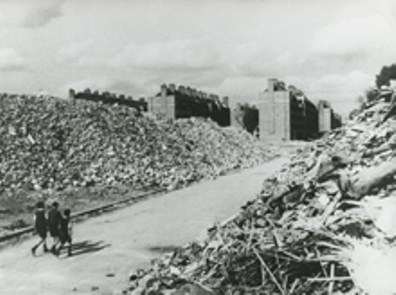
Humphrey Jennings: Life in the rubble of a bombed out city (A Diary for Timothy)
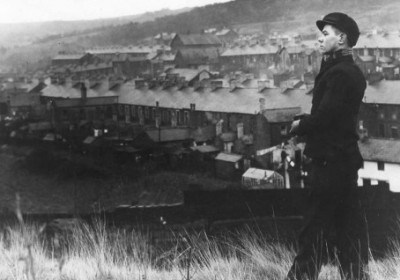
Jennings: The poetic urban landscape (A Diary for Timothy)
The idealized portrait of happy and industrious workers in the 1930s documentaries would be challenged by Humphrey Jennings, and, as Ian Aitken writes, his “ability to portray the working class literally and authentically often put him at odds with Grierson, who preferred more idealistic images of working class people” (Aitken 63). This lack of didacticism and preference for the type of poetic tone that Grierson had criticized in films like Berlin: Symphony of a Great City (1927, Walter Ruttman) as “pleasant sequences” that avoided real issues (Grierson 41-42) was what later filmmakers found interesting, and prompted Free Cinema theorist and filmmaker Lindsay Anderson to call Jennings British cinema’s “only real poet” (Anderson 236). It was not that Jennings featured negative representations of the working class, but images such as the uniformed women sitting on their bags and sharing a smoke as they wait for a train in Listen to Britain (1941) or firemen making their way through London’s battered East End in Fires Were Started (1943) are more evocative than obviously instructional. This style is what inspired what Anderson described as Free Cinema’s “essential difference,” that its directors “wanted to be poetic – poetic realism, but poetic” (Hill 128). The expressive treatment of setting would become a New Wave characteristic to such an extent that Penelope Houston suggested that British cinema in the early 1960s could be summed up “in a view of a boy and a girl wandering mournfully through the drizzle and mist of industrial Britain” (Houston 119).
Like Jennings’ documentaries, the effect is to value the creation of a sense of place over advancing the plot, which Hill describes as the “deployment of actions and, especially, locations which are ostensibly non-functional, which only loosely fit into the logic of narrative development” (Hill 129). Examples of this would include Jo (Rita Tushingham)’s walk along the canal in A Taste of Honey (1961, Tony Richardson), Colin (Tom Courtenay)’s long training run through the woods in The Loneliness of the Long Distance Runner??(1962, Tony Richardson) and Vic (Alan Bates)’s walk through the town in ??A Kind of Loving (1962, John Schlesinger), but variations can be found in almost all of the New Wave films. It became close enough to a cliché that it would be half copied, half parodied in Ringo Starr’s lonely walk through the city in A Hard Day’s Night (1964, Richard Lester), a film that is not considered part of the New Wave, but owes a good deal to it. The intended result of this focus on landscape, what McFarlane calls the “insistent evocation of time and place” (McFarlane 138), is to suggest that the lives of the working class protagonists are inescapably defined and limited by their environment.
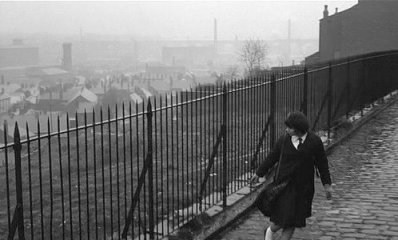
Jo goes for a walk (A Taste of Honey)
One aspect of the 1930s documentaries that Jennings did not challenge was the absence of class conflict. However, where Grierson and Rotha avoided the question because of institutional restrictions, Jennings caught the country’s mood by consciously championing the cross-class unity created by the extremities of war. As Roy Armes writes, what Jennings portrayed was “not necessarily . . . the situation as it actually was, but of the way in which Britons felt it to be” (Armes 154). Images that celebrate Britain’s unity run through Jennings’ films, including Listen to Britain??’s cutting from Flanagan and Allen singing “Underneath the Arches” to an audience of workers to Myra Hess playing a classical piece at the National Gallery for an audience that includes the Queen, and the Christmas sequence in ??A Diary for Timothy (1945), where the engine driver, Welsh miner, rural squire and upper class pilot all, in their separate environments, lift their glasses in a toast to absent friends. What plot there is in Fires Were Started concerns an upper class man being absorbed into a fire brigade unit that is otherwise entirely working class. He shows his flexibility by playing both classical music and popular songs on the piano, and of course proves himself in the firefighting sequence.
This celebration of unity is also a characteristic of the post-war Ealing comedies. In Hue and Cry (1947, Henry Cornelius), early scenes of public school and working class boys crowding around to read crime magazine stories are followed by a climax where boys of all classes and parts of London join together to rout a gang of crooks. Similarly, while both the local grocer (Stanley Holloway) and bank branch manager (Raymond Huntley) in Passport to Pimlico (1949, Henry Cornelius) could be considered middle class, Holloway’s working class cockney accent and desire to turn a bomb-damaged area into a playground for local children mark him as Labour, just as Huntley’s prim, educated speech and intention to sell the area to a private business show him to be a Tory. Their joining together under crisis is a conscious return to wartime unity. Whisky Galore! (1949, Alexander Mackendrick) goes even further, presenting a classless society unified in the face of outsiders. However, these films also show how much the country had changed. As George Perry writes, the “euphoria of 1945, when Labour rode to power on the votes of much of the middle class who were looking for a new approach to national problems, subsided in the face of nationalization, controls, planning and shortages” (Perry 112). So while Jennings’ Family Portrait (1950) could feature shots of people cheerfully queuing for goods and claim that Britain had been “lucky to learn the trick of voluntary discipline,” the Ealing films tell another story. In Passport to Pimlico, a London East End neighbourhood falls out of British jurisdiction and the residents promptly tear up their ration books and keep the pubs open late, while the area is soon swamped by merchants and shoppers from the rest of the city who also want to escape the extensive government restrictions then prevalent. In Whisky Galore!, a Scots island where whiskey is severely rationed has a boatload of the golden stuff wash up. It is then immediately scavenged by the resourceful islanders, who outwit and humiliate the representatives of British bureaucracy who try to confiscate it. Charles Barr argues that the “prime fantasy” of these films, particularly Passport to Pimlico, was not “the dream of release from rationing and restrictions . . . The more potent dream that takes over from it is of a return to wartime solidarity” (Barr 104). This is true to an extent, subject to an important qualification, made by Christine Geraghty, that “the state can be restored to its wartime role of representing and protecting the people instead of bullying them” (Geraghty 56). A characteristic of Ealing comedies was the deliberately unconvincing twist ending, where “conventionally moral resolutions are imposed in a tongue-in-cheek way, right at the end, without challenging our commitment to their central characters’ single-minded projects” (Barr 96). Examples of this include Pimlico, where the “Burgundians” return to Britain and get new ration books to the accompaniment of a sudden rain storm, Whisky Galore!, where the contraband whiskey runs out and high taxes make it too expensive to buy more, and Kind Hearts and Coronets (1949, Robert Hamer), where the freed and unrepentant killer suddenly remembers he left his diary behind in prison. So while there was a nod to wartime unity, the unlikely nature of these resolutions suggest that what these films really had to offer audiences was a “pretext encouraging audiences to imagine alternatives to present social practices” (Landy 373), and can be read as a reflection of a middle class rebellion against the socialism of Clement Attlee’s Labour government. To see these films is to understand how Churchill could return to power in 1951 on a promise of making a “bonfire of controls.”
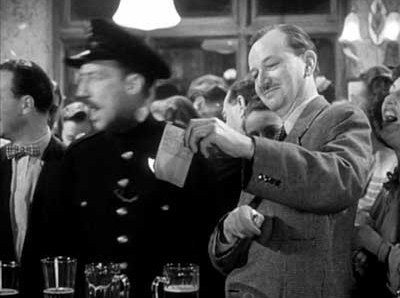
Ealing middle class protest: Tory banker burns his ration card (Passport to Pimlico)
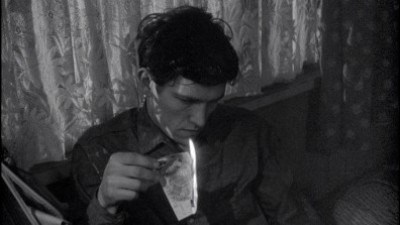
Colin burns a pound note (The Loneliness of the Long Distance Runner)
If Jennings’ documentaries were an expression of the wartime mood and the Ealing films of the increasing impatience with postwar austerity, the class divisions highlighted by the Free Cinema and New Wave films can be seen as a reflection of the relative affluence of the Conservative era, particularly the six years (1957-63) that Harold MacMillan was Prime Minister, which correspond almost exactly with the New Wave period. As Hill writes, “the key to understanding Britain in the 1950s resides in the idea of ‘affluence’” (Hill 5). The subjects of the Free Cinema films Momma Don’t Allow (1955, Karel Reisz and Tony Richardson) and We Are the Lambeth Boys (1958, Karel Reisz) are all either employed or in school, and in Lambeth Boys even discuss the question of whether they have too much spending money. Similarly, none of the New Wave protagonists are struggling financially. Arthur in Saturday Night and Vic in A Kind of Loving are employed, Colin in Loneliness is offered a job, which he turns down, and even Jo in A Taste of Honey, when not ducking out of bedsits to avoid paying rent, has no trouble finding work when she wants it. What these films highlighted was that the increased income and new consumer goods that came with affluence did very little to change the class structure. The most striking illustration of this dissatisfaction with affluence is in The Loneliness of the Long Distance Runner, where Colin and his family use insurance money to go on a spending spree, buying armloads of worthless junk and ending with Colin alone in his room setting a pound note on fire. This critique of affluence also distinguishes the New Wave films from the social realist films of Ken Loach which came a few years later and where upward mobility is not a major issue. The protagonists of Cathy Come Home (1966) and Kes (1970) are too busy dealing with poverty to worry about affluence or whether there is room for them at the top. The New Wave films expressed a frustration with class stasis that was reflected in a tension, similar to that in the Ealing comedies, between their content and resolutions. The endings routinely featured their protagonists being punished (Saturday Night and Sunday Morning, The Loneliness of the Long Distance Runner) or settling for an unsatisfying domesticity (Saturday Night again, A Kind of Loving, Jack Clayton’s 1959 film Room at the Top), but what gave the films their jolt of energy and presumably attracted audiences were the acts of rebellion that preceded these resolutions.
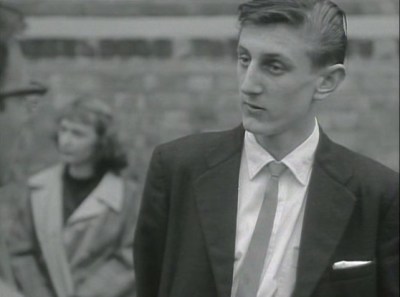
Working class in We Are the Lambeth Boys
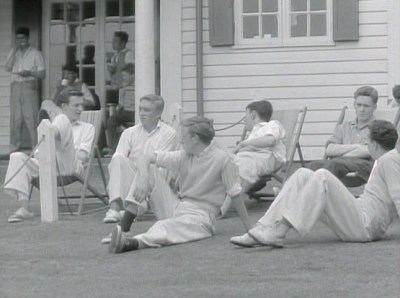
Upper Class Boys in We Are the Lambeth Boys
Another aspect of Jennings’ films which was influential was his use of location shooting, which Michael Balcon, the head of Ealing studios, named as the “single greatest influence” on the Ealing style (Perry 52). Hue and Cry and Passport to Pimlico were set and filmed in the same parts of London’s East End as Fires Were Started, with action taking place among the rubble and bomb damaged buildings that still remained. Hue and Cry in fact begins with a pan of London’s docks that could have easily come from one of the wartime documentaries. Geraghty notes that the Jennings-style documentary treatment of the setting provided “realist detail” that gives the Ealing fantasies much of their effect (Geraghty 57). Whisky Galore! begins with an ironic version of a Robert Flaherty-style montage of chirpy fisherfolk as the narrator describes the islanders as a “happy people with few but simple pleasures,” but then immediately undercuts it by matching the words “simple pleasures” with a shot of long stream of children leaving a house. In fact, parts of this film can be seen as a takeoff on Man of Aran (1934, Robert Flaherty). Where Flaherty showed an extremely unlikely Irish island where there was neither pub nor church, Mackendrick presents a community which is strictly Sabbatarian and obsessed with drinking. Despite this, the expressive shots of the sea, the coast and town, as well as the sympathetic and humourous representation of local customs are much closer to Jennings than to Flaherty’s mythmaking.
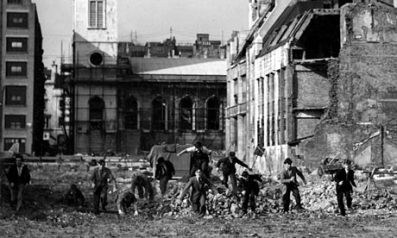
Ealing: Uncowed by landscape (Hue and Cry)
While the Free Cinema and New Wave films also featured a “poetic documentary” treatment of the landscape, a difference between them and the earlier films is that the landscape is viewed with much less sympathy. The boys scrambling over the rubble in Hue and Cry and the Scots islanders in Whisky Galore! are uncowed by their environment. In Passport to Pimlico, the bomb damage is to be cleared away and replaced by a playground. In The Titfield Thunderbolt (1953, Charles Crichton), the West Country landscape is photographed in glorious, loving colour; but in the Free Cinema film Wakefield Express (1952, Lindsay Anderson), the Yorkshire countryside only a few hours north is carefully framed to always include industrial smokestacks in the background. In We Are the Lambeth Boys, the establishing shot of the youth club emphasizes the fence that surrounds it, while the gate to Arthur’s lane in Saturday Night and Sunday Morning is constantly guarded by two disapproving old women and at the end of the film, as he sits on a hill with his fiancée, the housing estate below provides a context by showing where they will spend the rest of their lives. The sense of architecture functioning as a prison reaches its height in The Loneliness of the Long Distance Runner, much of which is set in a prison. The emphasis throughout is on “lives . . . played out against the backgrounds that shape and confine them,” and the “streets of drab council houses” where they sleep (McFarlane 138).
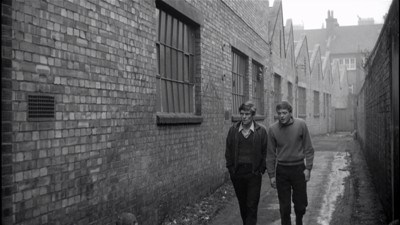
Colin at the reformatory (The Loneliness of the Long Distance Runner)
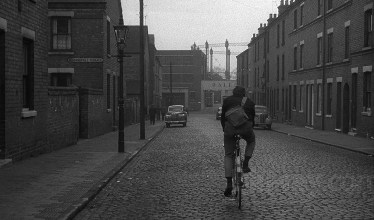
Arthur bikes to work (Saturday Night and Sunday Morning)
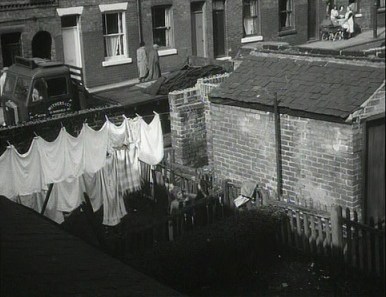
Arthur’s housing estate (Saturday Night and Sunday Morning)
Another important characteristic of the New Wave was that, like most of the Free Cinema films, it was focused on youth culture. The late 1950s, of course, saw filmmakers all over the world showing an interest in young adults and their frustrations. But unlike France’s nouvelle vague, for example, the British films’ characters were to a large extent defined by their social class. Beyond the ongoing British fascination with class distinctions, an immediate source for this was the “Angry Young Man” literature of writers such as playwright John Osborne (Look Back in Anger) and novelist Alan Sillitoe (Saturday Night and Sunday Morning and The Loneliness of the Long Distance Runner). Like the nouvelle vague, these films usually focused on the concerns of young men, but one of the most prominent, A Taste of Honey (1961, Tony Richardson), concerned a young woman and was based on a play by a woman, Shelagh Delaney. What these writers brought to the New Wave was the habit of viewing youthful rebellion through the prism of Britain’s class system, leading to the conclusion that no matter how smart or funny or energetic or eloquent Arthur and the other protagonists of these films are, they will almost certainly end up living lives not much different from their parents.
This viewpoint relates to a characteristic that both unites and divides the Jennings-Ealing films from the Free Cinema-New Wave cycles, that while they share an outsider attitude toward working class culture, they are sharply distinct in their reactions to it. The difference can be summed up in Bill Nichols’ comment (about documentary, although it can be applied to any film) that a film “organized as It speaks about them to us will have quite different qualities and affect from one organized as We speak about us to them” (Nichols 21). Jennings was not working class, and Armes writes that his “viewpoint is resolutely that of the educated middle class” and in A Diary for Timothy “significantly chooses one of the more fortunate babies born in 1944 as his protagonist” (Armes 156). He was, however, sympathetic toward the working class and included representations of its culture in his films. As Philip Simpson writes, “in a nation chronically dominated by the hegemonic high cultural pretensions of its capital city, Jennings wanted to demonstrate there were other forms of culture in other places, even if his view was necessarily an external one” (Simpson 302). And so we have Flanagan and Allen singing to a cheerful and friendly audience of workers in Listen to Britain and singalongs on “Please Don’t Talk About Me When I’m Gone” and “One Man Went to Mow” in Fires Were Started. Although his view was external, by placing these pieces of working class culture alongside children’s choirs singing “O Come All Ye Faithful” or Myra Hess playing Beethoven, Jennings offered a version of British culture that included both him and the workers, which may be why the concept of wartime unity was so central to his work. “One Man Went to Mow” is also sung by the boys in Hue and Cry, and while Ealing was “basically a middle class institution” (Perry 111) and typically featured protagonists in middle class professions such as grocers (Passport to Pimlico and Whisky Galore!), bank clerks (The Lavender Hill Mob [1951, Charles Crichton]), local squires and vicars (The Titfield Thunderbolt), the classes mix easily as they share songs or pints at the local pub.
The Free Cinema “gaze” is very different. In O Dreamland (1953), Lindsay Anderson presents a view of a theme park that mocks the worthless and miserable pleasures of the working class. Anderson claimed that his goal was to “make people – ordinary people, not just top people – feel their dignity and their importance” (Hill 128). This statement is hard to square with having his camera pan along the fat bottoms perched on stools as a voice on the soundtrack repeats the bingo numbers, the emphasis on glum faces and mechanical laughter, or the generally nightmarish tone of the film. Hill emphasizes that an outsider gaze is being offered, arguing that Anderson imposed “a privileged interpretation of events and created meanings not contained in the images,” and that what is missing is the “attitude or point of view of the characters themselves” (Hill 133). Armes writes Anderson makes “no attempt to understand the people he is filming but is content to record the drab surface coldly” (Armes 266). This patronizing and clinical attitude toward working class culture runs through the New Wave films. A Taste of Honey has a funfair sequence that is almost a reprise of O Dreamland, while the representations of working class culture in other films consist either of binge drinking (Saturday Night and Sunday Morning, A Kind of Loving) or zombie-like gazing at the television (those two, along with Loneliness of the Long Distance Runner).
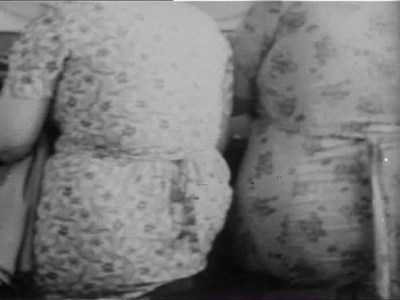
O Dreamland!
A further example is the attitude toward what John Hughson describes as the “undeniable centrality of sport to British working class life” (Hughson 44). School playgrounds have symbolic importance in almost all these films. In Listen to Britain, children clog dance while looked over by a benevolent teacher, a symbol of England that is threatened by the Nazis. In Passport to Pimlico, an important plotline involves the replacement of rubble from bomb damage with a playground. These positive images give way in We Are the Lambeth Boys to shots of working class boys playing cricket in a tightly enclosed area that resembles a cage, and being contrasted with the open fields where the match against the posh public school boys is played. This idea of sport as a tool of oppression runs through the New Wave films, and grim playground scenes can be found in most of them, notably Saturday Night and Sunday Morning, A Taste of Honey, The Loneliness of the Long Distance Runner (where the playground literally is part of a prison and sport is explicitly shown as a means of social control) and This Sporting Life (1963, Lindsay Anderson). In this context, the sequence in A Hard Day’s Night where the Beatles cavort on the playground to “Can’t Buy Me Love” gains an increased air of giddy liberation.
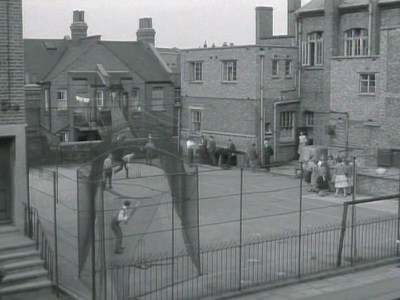
Working Class Confinement
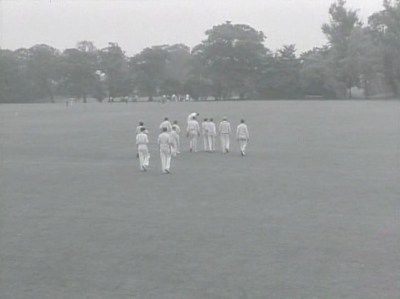
Rich Open Spaces
While there is some nostalgia for vanishing working class culture in the New Wave films (the brass band in A Kind of Loving, the Crazy Gang poster on Aunt Ida’s building in Saturday Night and Sunday Morning), it is relatively easy to be sympathetic toward something that no longer exists. Among other things, it offers another stick to beat what does exist. So while Jennings and the Ealing filmmakers were able to construct a community, real or imagined, in their films that could include both themselves and the working class, and organize them as films that “explained us to them,” the distancing between the New Wave filmmakers and their subjects typified by Karel Reisz’ comment that he “disagree[d] strongly with the idea that Arthur Seaton [from Saturday Night and Sunday Morning] embodied my values, my outlook – I am a middle class Jew from central Europe” (Armes 271) left them very much as films that “explained them to us.” Again, this is far from a filmmaker like Ken Loach, who obviously identifies with and celebrates the lives and struggles of his working class subjects from an insider view despite his middle class background. This detached sympathy without genuine identification with their subjects is what led Raymond Durgnat to make the sour claim that the Free Cinema-New Wave radicals were “uninterested in the masses except as images of their own discontent” (Hill 133).
This detachment is also related to another pioneering feature of the New Wave, the treatment of sex. This was partly due to the relaxing of censorship and the influence of French nouvelle vague films with high sexual content by the standards of the time such as Les Amants (1958, Louis Malle), but Hill notes that it is striking “how readily . . . [the] treatment of ‘kitchen sink’ subjects (‘working class squalor’) became attached to an opening up of the cinema’s treatment of sex” (Hill 136). Fascination with the sex lives of the British lower orders goes back at least as far as Lady Chatterley, but there was a freshness in dealing with previously forbidden subject matter such as extramarital and premarital sex, homosexuality, unmarried pregnancy, (sympathetically treated) miscegenation and abortion. However, there also seemed to be a very traditional perceived connection between class and sexual prowess. The archetype of this is Arthur in Saturday Night and Sunday Morning, who says that if his coworker with middle class aspirations could keep his wife satisfied, she wouldn’t be sleeping with him. Similarly, Jimmy Porter (Richard Burton) in Look Back in Anger (1959, Tony Richardson) replaces his upper class wife by seducing her upper class friend, while Joe in Room at the Top sleeps his way up the ladder. All these sexually active protagonists are punished for their randiness. Arthur from Saturday Night is viciously beaten, Colin from Loneliness commits a robbery to finance a dirty weekend in Skegness and is sent to a youth prison, Vic from A Kind of Loving knocks up a girl, Jo from A Taste of Honey gets knocked up, and Joe from Room at the Top loses the woman he loves. This fascination with working class sexuality combined with an insistence on punishment suggests curiosity about sexual myths without any real sympathy, and Hill claims it marks a “separation between spectator and subject, [and] the pleasures derived may rely less on recognition than the very sensation of class difference” (Hill 136).
The British New Wave and the Free Cinema cycle that immediately preceded it drew from a variety of sources, and it is possible to trace aspects of it to previous cycles of British films, notably the wartime documentaries of Humphrey Jennings, the post-war Ealing comedies and the Free Cinema films of the 1950s. However, the New Wave films consolidated them in mainstream dramas that attempted to deal with fresh subject matter in a serious way. While there is certainly much to criticize about them, particularly in their detachment from their subjects, there are many good things in them. The photography, mostly by Walter Lassally, is easily as poetic and memorable as they hoped it would be. The drab cities and distinctive accents look and sound authentic and it is possible to believe the British working class of the period did live lives something like what was on screen, which is not something that can be said of many British, or Hollywood, films made then.
Works Cited
Aitken, Ian. “The British Documentary Film Movement.” The British Cinema Book. Ed. Robert Murphy. London, UK: BFI Publishing, 1997. 58-67.
Anderson, Lindsay. “Some Aspects of the Work of Humphrey Jennings.” The Documentary Tradition. Ed. Lewis Jacobs. New York, NY: Hopkinson & Blake, 1974. 236-243.
Armes, Roy. A Critical History of British Cinema. New York, NY: Oxford University Press, 1978.
Barr, Charles. Ealing Studios. London, UK: Cameron & Taylor, 1977.
Geraghty, Christine. “Resisting Modernity: Comedies of Bureaucracy and Expertise.” British Cinema in the Fifties: Gender, Genre and the ‘New Look’. London, UK: Routledge, 2000. 55-75.
Grierson, John. “First Principles of Documentary.” Grierson on Documentary. Ed. Forsyth Hardy. London, UK: Faber & Faber, 1979. 35-46.
Hill, John. Sex, Class and Realism: British Cinema 1956-1963. London, UK: BFI Publishing, 1986.
Houston, Penelope. The Contemporary Cinema: 1945-63. Harmondsworth, UK: Penguin Books, 1963.
Hughson, John. “The Loneliness of the Angry Young Sportsmen.” Film & History. 35.2 (2005): 41-48.
Landy, Marcia. British Genres: Cinema and Society 1930-1960. Princeton, NJ: Princeton University Press, 1991.
McFarlane, Brian. “A Literary Cinema? British Films and British Novels.” All our Yesterdays: 90 Years of British Cinema. Ed. Charles Barr. London, UK: BFI Publishing, 1986. 120-142.
Nichols, Bill. “How do Documentaries Differ from Other Types of Films?” Introduction to Documentary. Bloomington, IN: Indiana University Press, 2001.
Perry, George. Forever Ealing. London, UK: Pavilion Books, 1981.
Simpson, Philip. “The Humphrey Jennings Film Reader.” Screen 36.3 (1995): 301-4.



